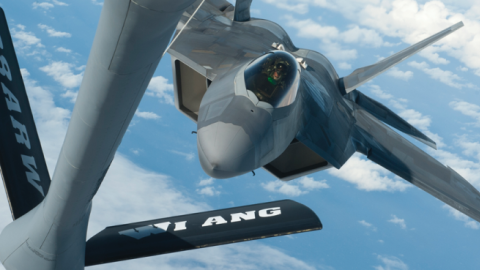The US military’s aerial refueling enterprise is a critical component of its ability to project power globally in defense of American interests. As the US military adopts new concepts to enhance its lethality and gain decision advantage, aerial refueling is increasingly necessary to enable a more distributed and dynamic force. However, with an aging inventory of tanker aircraft and stiff budgetary headwinds, it is an open question whether the US Air Force is capable of fielding the aerial refueling force that the nation needs.
This study assesses the current and programmed US aerial refueling enterprise and has found that it likely would be unable to support US strategy and operational concepts at scale against peer adversaries such as the People’s Republic of China. However, the US military could address these shortfalls and improve the operational resilience of its aerial refueling enterprise by adopting new concepts, capabilities, capacities, and posture.
Key Findings
1. Enhancing the capacity and robustness of the US military’s aerial refueling surface architecture should be a top priority for the Department of Defense.
- Additional investments in Indo-Pacific airfields, bulk fuel storage and distribution, and defenses should be funded.
- Allocating an additional $633 million per year over the next 10 years (and $400 million thereafter) to Indo-Pacific posture and bulk fuel distribution could boost employable tanker capacity in the Indo-Pacific by 63% within a decade and greatly improve the resilience of the force—even if it comes at the cost of tanker procurement.
- Absent these investments, changes to the tanker portfolio may have a marginal effect.
2. Aerial refueling command and control (C2) and communications improvements can greatly improve operational efficiency and effectiveness.
- New fleet optimization and planning tools can lower operations and support costs while increasing readiness rates.
- New C2 and communications tools can support distributed, dynamic operations and reduce vulnerability.
3. The procurement of a non-developmental “Bridge Tanker” force should provide high-capacity offload at range and pave the way to evolve the tanker fleet.
- Continued KC-46 production would increase tanker commonality.
- LMXT (based on the A330 MRTT) would excel at long-range, large offload missions.
- The Bridge Tanker program should not crowd out funding for hardening current tankers and developing a new tanker termed K-Z (also referred to as the Advanced Air Refueling Tanker).
4. Small and very small tankers are inadequate for most US Air Force requirements.
- They are unable to support likely formations of fighter aircraft or small numbers of large aircraft at range.
- They impose operational complexity on friendly forces and tie up larger tankers to perform inefficient multi-stage transfers.
5. US Air Force needs a dedicated K-Z design that is efficient in terms of fuel consumption, ramp space, and lifecycle cost and is capable of offloading fuel at range, including in slightly contested environments.
- A medium-size, lightweight tanker, K-Z(M), appears to be a promising design.
- Cost-effective signature management and defensive system improvements are likely possible at a reasonable cost.
- By procuring 18-24 affordable K-Z(M)s per year, KC-135s can be retired sooner and the average age of the tanker fleet can reach and remain less than 30 years, shifting resources from operations and support toward procurement.



















